New Forester — ideal way to cruise Gordy’s
By John Gilbert
A couple of friends and I were reminiscing the other day about the sheer pleasure of “cruising,” back in the old days, when it was almost an artistic endeavor — particularly in beautiful downtown Duluth, Minnesota, where we happened to be at the time, and where we used to do our cruising.
That really doesn’t have that much to do with this week’s vehicle review, of the 2021 Subaru Forester Sport, although modern-day cruising 50 or 60 years later, can still be achieved.
But we’ll get to that, and how the new Forester, with its beautiful dark blue paint job accented by orange pinstriping, can do the job.
We’d have treasured that Forester back in the late 1950s and early 1960s, when we were eager to jump into a 1951 Studebaker, or a 1952 Mercury coupe, or a 1955 Chevrolet, or a 1960 Volkswagen Beetle. You name it, we’d cruise in it. Every teenager who could get his hands on a car did so, filling it with several buddies to drive through downtown Duluth on warm summer evenings.
The main street is Superior Street, and it is on a long, flat, horizontal plane just a couple blocks up from Lake Superior’s North Shore, at the bottom of a mile-high hillside. After circling down to Canal Park — which wasn’t Canal Park in those days, but a seedy 1st Avenue East that passed several junkyards to reach the canal area, where somebody had built a drive-in restaurant named King Leo’s. It didn’t have great food, except for the onion rings, which were legendary, but it showed up to try to compete with the primary stop for food and socializing, which was the London Inn, a neat, tidy place on London Road, between 16th and 17th Avenues East.
There was a Dairy Queen on the corner of 17th, but the traffic flow turned into the London Inn, circled up on the right side of the building, curled around, and came back down the left side. You looked hard for a parking spot to back into, and if you found one, you might be there for two or three hours, walking up front to get one of the very tasty 19-cent hamburgers, 24-cent cheeseburgers, 15-cent french fries, and maybe a 19-cent milkshake — chocolate, vanilla or strawberry. It was amazing how long you could make those provisions last, while you basically hung out, trying to look cool, in a James Dean sort of way, while watching for friends in the city’s version of teenage socializing.
If you didn’t find a parking slot, you drove out the exit, tjurned right, and made the run back downtown, circling King Leo’s before heading back to the London Inn to seek better luck. We usually rode in Alvin’s old, red Studebaker, which had a green door from a previous repair, and the green door had a ring of apparent corrosion that looked a lot like a wreath, a symbol of future repairs, but we didn’t care, and we knew it made more sense at Christmastime.
We also rode in Halsey’s old Mercury coupe, before he traded it in for a new Mercury coupe, or we borrowed my mom’s 1955 Chevy, when I first got my license, and before she traded it in for a 1960 Volkswagen Beetle, which was a classic cruiser. With a sunroof and a gas heater — both of which were vital pieces, with the sunroof giving some of our gang the chance to stand up as though operating from the conning tower of a submarine, and the ability to stay warm when the air-cooled engine proved its “heater” was an exaggerated term.
Yes, the new Forester would have been the perfect cruiser back then, with its symmetrical all-wheel-drive scaling the steepest avenues, and that orange pin-stripe standing out.
Our reliance on cruising continued during our first two years at UMD, but ended when a couple of us moved away to attend the University of Minnesota. Coming home for weekends just didn’t leave cruising as a prime attraction for our precious time, even though by then I had obtained a 1956 Studebaker Hawk that was a fabulous commuter for the trip home from “the Cities,” and which I have often wished I still owned.
The London Inn was sold to somebody else, and is long since gone, having been somehow rebuilt into a Chinese restaurant, although its memory will return to provide a surprise ending for this review, which puts it one-up on the Dairy Queen, which is now a smoke shop. A smoke shop! Hard to imagine, because not smoking was cool in our group.
If we wanted to relive the cruising days in contemporary times, the only logical destination would be Gordy’s Hi-Hat in Cloquet, which is, without question, the best drive-in restaurant on the planet. There were some good ones in the Twin Cities, such as Porky’s, or Jerry’s, but they disappear into the past once you’ve been to Gordy’s, which has been featured on Diners, Drive-Ins, and Dives on two different occasions. For my wife, Joan, and me making the jaunt to Cloquet is mandatory about once a week, to help stretch out the too-short summer months.
Open only from late spring to early fall, Gordy’s burgers, coneys, fish and chips, onion rings, and fantastic milk shakes — real ice cream, with blackberries, blueberries, raspberries, strawberries, butterscotch, hot fudge, pineapple, and several others I can’t remember — are to be treasured by everyone in the area, or driving up or down Hwy. 33 to or from the Iron Range.
We had the perfect vehicle for the jaunt, with a week’s test drive of a 2021 Subaru Forester, which is both familiar enough to seem retro and new enough to bridge the generation gap. The trip seemed more appropriate with our older son, Jack, filling the gap in the spacious back seat.
Climbing into the driver’s seat of a Forester — or any Subaru, for that matter — has a familiar and comfortable feeling, as comfortable as climbing into a favorite pair of Levi’s, or shaking up your teenage memories to recall when you first went “cruising” for an evening’s adventure.
The Forester grew up from being a compact all-wheel-drive station wagon to becoming what “sophistication” led Subaru to start calling an SUV — overlooking the small fact that Subaru made AWD Subarus long before the trendy wheels of culture turned up the nickname SUV.
The new Forester is a little different, changing over to a new size and appearance a year ago, even if it retains that comfortable old feeling. For our Forester cruise, we wound our way out through West Duluth, past Morgan Park, Gary, and New Duluth to Fond du Lac, where we turned up for the always-satisfying drive through Jay Cooke State Park. The winding road traces the St. Louis River as it rushes from Carlton to pour into the St. Louis Bay on the westernmost tip of Lake Superior. Once in Carlton, we had manipulated our way for the short drive into Cloquet.
The Forester Sport still has its usual near-9-inch ground-clearance all around, in case you want to do light off-roading, and the body, which is refined for 2021 as if to be the perfect cruiser.
The test vehicle came with Subaru’s ageless 2.5-liter, flat-opposed 4-cylinder engine, which powers a variety of Subaru models, and turns out a respectable 182 horsepower and 176 foot-pounds of torque. It’s possible to get a turbocharged engine of about the same dimensions with almost 100 more horses, but the existing powerplant is plenty adequate for the Forester’s size and weight. And with the standard symmetrical all-wheel-drive, it never felt underpowered, as long as you didn’t try to get too racy.
The power might be adequate, but it suffers a downgrade because of the CVT — continuously variable transmission — which tended to drone when you’d like it to shift. Shift paddles save the day, allowing you to manually shift what is actually a shiftless or always-shifting transmission. Got that?
Subaru owners are extremely loyal, and the cars have gotten better as if to stay ahead of those who cherish them enough to buy another one. They are durable, dependable, outstanding in Northern Minnesota winters, and safe and solid. They don’t always get sensational fuel economy, my personal peeve with the engine design, although our achievable 28.5 miles per gallon was pretty good with the EPA estimates at 26 city, 33 highway. I think you’d have to stay under 65 to reach 33.
All the connectivity features are on board, and the car was comfortably compliant, even on rough, winter-ravaged streets. With a few options, the sticker was $32,090, including an interior that features a leathery-rubbery substance on the bucket seats and dashboard, which appears to be a combination of contemporary class and extremely hardy against normal wear.
The Forester is tall, as tall as the Chrysler Pacifica we recently test-drove, so it’s no longer comfortable in the compact-wagon category, which it has outgrown.
It was comfortable for adult cruising, and we pulled off at a roadside stop to gaze at the St. Louis River, and to climb the stairs to examine an ancient cemetery with headstones dating back to the 1800s.
We continued on our special trip to Gordy’s, because we had just heard the sad news that Gordy, he of the high hat, died at the Florida home he shared with his wife, Marilyn, and the two were together when he died just short of his 94th birthday, from the worsening effects of cancer.
We paid our respects to current owner, Dan Lundquist, Gordy’s son, and to Sever, Dan’s son and Gordy’s grandson, who works the counter alongside his dad.
A few years ago, we had stopped at Gordy’s for lunch, and I told Dan that I knew Gordy had insisted the ground beef they buy, fresh and never frozen, from a private ranch in Southern Minnesota, was an element of how he insisted that everything they sell is made from the best ingredients.
The stories of humanitarian generosity Gordy and Marilyn have done for people in Cloquet and the surrounding area are legendary, and you will never hear anybody say a bad word about Gordy. But I told Sever that all the nice tributes written about Gordy after he died don’t say anything about how great the food is! The personal tributes to the man, who worked the counter up until two years ago, are all deserved, but when reporters never mention anything about how good the burgers, or fish, or milkshakes are, you know they have never actually eaten at the place.
Gordy’s closes each winter, from October until May, and when the annual reopening occurs, business booms. With the pandemic, they stayed closed until they came up with the idea of moving the entrance south a hundred yards, so two lanes of cars could enter and inch forward until they got up to the front, from where they were directed to the next opening for a parking place surrounding the restaurant. Very promptly, car-hops would appear at your car-window and take your order, which was delivered in record time. It worked so smoothly, I wondered if they might keep it up, but they have reopened inside for the rest of summer.
New on the menu a couple weeks ago is an orange-cream milkshake, and an orange-cream root beer float. Sever said that Gordy had become very fond of the orange-cream floats, so as a tribute, I added an orange-cream shake to my order.
My favorite Gordy’s story was the day a couple of years ago when I was praising Dan Lundquist for the food and service at the place. I told Dan that Gordy’s is the best drive-in I have ever gone to, and that the only one that ever approached it for quality food and efficient service was 50 or 60 years ago — a place called the London Inn, in Duluth.
And Dan said: “That was my dad’s place, too.”
I was astonished. Sure enough, Gordy and Marilyn built and ran the London Inn in 1955, until 1960, when they sold my first favorite drive-in restaurant, and built Gordy’s, my new favorite drive-in, closer to home in Cloquet.
Rest in peace, Gordy; your family is making sure your legacy is secure, and we’ll keep cruising out to Cloquet to make sure all is in order.


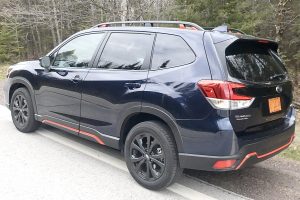
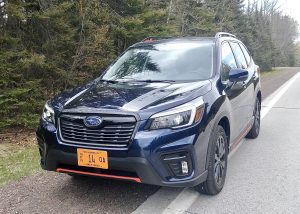
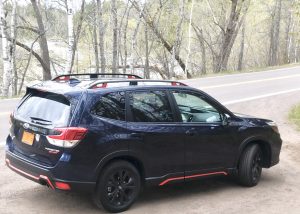
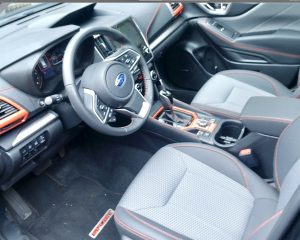
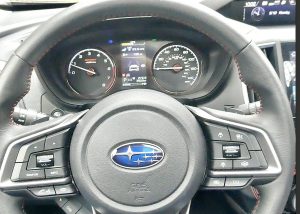
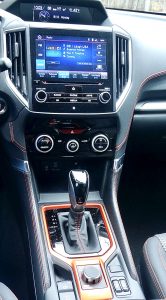
 John Gilbert is a lifetime Minnesotan and career journalist, specializing in cars and sports during and since spending 30 years at the Minneapolis Tribune, now the Star Tribune. More recently, he has continued translating the high-tech world of autos and sharing his passionate insights as a freelance writer/photographer/broadcaster. A member of the prestigious North American Car and Truck of the Year jury since 1993. John can be heard Monday-Friday from 9-11am on 610 KDAL(www.kdal610.com) on the "John Gilbert Show," and writes a column in the Duluth Reader.
John Gilbert is a lifetime Minnesotan and career journalist, specializing in cars and sports during and since spending 30 years at the Minneapolis Tribune, now the Star Tribune. More recently, he has continued translating the high-tech world of autos and sharing his passionate insights as a freelance writer/photographer/broadcaster. A member of the prestigious North American Car and Truck of the Year jury since 1993. John can be heard Monday-Friday from 9-11am on 610 KDAL(www.kdal610.com) on the "John Gilbert Show," and writes a column in the Duluth Reader.